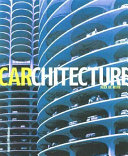Public Spaces, Private Spaces, And The Right To The City
Stefano Moroni, Francesco Chiodelli.

Overview
Two arguments have recently strongly influenced the theory and practice of planning: (i) public space is what basically characterises any city (the citizen's right to the city is first and foremost a claim on public space); (ii) public space is crucial because it provides the physical fulcrum for public interaction and political debate. This article takes a critical look at these two ideas, highlighting: (i) that private spaces have also crucially contributed (and continue to do so) to defining and determining what a city is – the city cannot be conceived without considering both public and private spaces and the crucial synergy between these two spheres; (ii) that the public sphere does not come into being solely in public spaces (as testified by the Internet); furthermore, public spaces perform other roles and functions (besides making debate and confrontation possible), and these various roles may at times clash with each other. All these aspects suggest a more balanced approach to the understanding of urban spaces and their importance



























